Croatia Ready to Conquer Serbia – With Wines
Exports are on the rise, and the quality of the wines has been recognised beyond the borders of Croatia, said Croatian Chamber of Commerce’s vice-president for agriculture and tourism, Dragan Kovačević. In 2018, Croatia exported 16 million euro worth of wines, of which 938,799 euro went to Serbia, an increase of 35 per cent compared to 2017, reports Agrobiz.hr on March 31, 2019.
Among the 300 top-quality wines from all over the world presented at the Wine Style wine salon in Belgrade this Saturday, there were 13 Croatian wineries – Medea, Kutjevo, Vinoplod-Šibenik, Zigante, PZ Vrbnik, Iločki Podrumi, Stina Vino, Degrassi, Dingač Skaramuča, Plavac Mali DNZ, Feravino and Pjenušci Peršurić. The participation at the Wine Style was co-financed by the Croatian Chamber of Commerce, as part of the project of promoting Croatian wines in Serbian market in 2019, worth one million kuna, with 80 per cent being financed from EU funds.
“The continuous promotion is necessary to create the brand, and we want Croatia to be branded in the eyes of the world as a country which can offer high-quality wines and autochthonous varieties. The results of efforts we make to promote the Croatian wines can be seen in figures,” said Kovačević.
"This project is significant. It is our pleasure to see that the state is looking at us in a different way and that the Croatian Chamber of Commerce is investing so much effort into Croatia becoming a wine country,” said Moreno Degrassi, the owner of the Degrassi winery.
The wineries also presented their offer at a promotional wine evening held at the Writers Club restaurant. It enabled the distributors and restaurant owners to experience the potential of new vintages under the guidance of the well-known sommelier Igor Luković. "The evening is a beautiful walk through three wine regions. Croatia has launched a wine renaissance, and the state and its institutions have recognised it in the right way. People in Serbia really drink Croatian wines, especially the ones from the coastal regions, which they remember from their summer holidays,” said Luković.
"The Serbian market is interesting to us because Serbs are happy to remember the times spent on Croatian coast and readily drink our wines. This has been proven by other winemakers who have already made a great success here, and I hope that we will find our place in the Serbian market as well," said Degrassi, who exports 15% of his production to Slovenia, Belgium, Sweden and Austria.
All the wineries will also be present at the Novi Sad Wine Salon in April, and the project will also provide for a trip to Dalmatia in May, in order to get the media and wine experts and distributors better acquainted with Croatian wineries.
The Croatian Chamber of Commerce has brought together all the wine producers under the umbrella brand “Vina Croatia - Vina Mosaica” to increase the visibility of Croatia on the global wine map as a country offering diverse and high-quality wines.
Translated from Agrobiz.hr.
More news about Croatian wines can be found in the Lifestyle section.
Croatia: Democratic Stability of Serbia Exceptionally Important
ZAGREB, March 19, 2019 - Croatian Foreign and European Affairs Minister Marija Pejčinović Burić said in Brussels on Monday that the protests which took place over the weekend in Belgrade were Serbia's internal matter, adding that democratic stability in Southeast European countries was important for Croatia and for the European security.
"I cannot comment on what happened in Belgrade yesterday. I believe this is Serbia's internal matter, but I can say generally that democratic stability in all Southeast European countries is exceptionally important for Croatia and for the European security," said Pejčinović Burić, who is taking part in a meeting of the EU foreign ministers.
The Serbian opposition has been staging largely peaceful rallies for weeks but tensions escalated on Saturday when crowds stormed the state TV station.
The protests in Belgrade over the weekend saw demonstrators storm the headquarters of the RTS public broadcasting service, surround the Presidency building and clash with the police. They ended on Sunday evening with an ultimatum issued to the authorities to release the protesters who were arrested for invading the RTS building by 3pm on Monday.
Asked about Serbia's progress on its EU journey and whether Croatia was resolving bilateral issues concerning the policy chapter 23, Pejčinović Burić said Croatia supported the EU path of all its neighbours, but that they had to meet requirements that were the same for every country.
"What kind of progress Belgrade has made on its path to the EU will be visible in a report on Serbia. We surely support the EU path of all our neighbours but the same rules apply to all countries and everyone must meet the set benchmarks. Serbia knows very well that without meeting those requirements it can hardly make progress in that process," Pejčinović Burić said.
Before the meeting in Brussels, the EU ministers talked to Macedonian Foreign Minister Nikola Dimitrov about North Macedonia's European journey, underlining the importance of the Treaty of Prespa, an agreement reached between Greece and North Macedonia under the United Nations' auspices, resolving a long-standing dispute over the latter's name.
Stressing the importance of the Treaty of Prespa for the stability in Southeast Europe, Pejčinović Burić expressed hope North Macedonia could receive a green light for the start of its EU entry talks in June.
More news about relations between Croatia and Serbia can be found in the Politics section.
Prime Minister Meets with Serbian Orthodox Leader Porfirije
ZAGREB, March 19, 2019 - Croatian Prime Minister Andrej Plenković on Monday received for talks the Serbian Orthodox Metropolitan of Zagreb and Ljubljana, Porfirije Perić, the government's public relations office said in a press release, adding that the meeting was also attended by Interior Minister Davor Božinović.
According to the press release, Plenković and Metropolit Porfirije said they wanted the dialogue and partnership between representatives of the government and state institutions and representatives of churches and religious communities in Croatia to continue.
Perić advocated joint action in resolving issues important for the Serb Orthodox faithful and the Serb ethnic minority.
Plenković said the government was working to strengthen the protection of the rights of all ethnic minorities, including by allocating more funds for economic development and resolving issues that had not been dealt with for years, the press release said.
More news about the status of Serbs in Croatia can be found in the Politics section.
Croatian President Doesn't Want to See Serbia's Destabilisation
ZAGREB, March 18, 2019 - Croatian President Kolinda Grabar-Kitarović on Monday declined to comment on the situation in Serbia, which has been shaken by anti-government protests, saying that the destabilisation of that country could destabilise the entire region.
"They are Serbia's internal affairs and I do not want to interfere. However, I don't want to see the destabilisation of the entire region, and the destabilisation of Serbia would certainly result in the destabilisation of other countries," Grabar-Kitarović told the press on the margins of an investment conference in Zagreb.
"This is not an ideal time for Southeastern Europe and we should be very careful when it comes to relations between countries, including the relationship between Croatia and Serbia and Bosnia and Herzegovina," the president said.
The protests in Belgrade over the weekend saw demonstrators storm the headquarters of the RTS public broadcasting service, surround the Presidency building and clash with the police. They ended on Sunday evening with an ultimatum issued to the authorities to release the protesters by 3pm on Monday who were arrested for invading the RTS building.
Serbian President Aleksandar Vučić said in an interview with the Pink commercial television network on Sunday evening that "violence will not go unpunished anymore."
More news about relations between Croatia and Serbia can be found in the Politics section.
Croat Minority in Serbia Dissatisfied with Minority Status
ZAGREB, March 11, 2019 - Progress has been made only in four out of total 25 recommendations given in order to improve the status of the Croat minority in Serbia, which is why the delegation of the Croat community is going to convey dissatisfaction at a two-day meeting of the mixed Croatian-Serbian committee which will start in Zagreb on Tuesday.
Out of all the recommendations defined in the minutes of the seventh meeting of that committee, progress has been made in only four recommendations referring to education, according to the document the Croat representatives prepared for the meeting that will be held in Zagreb and Pakrac.
No progress at all has been made in nine recommendations, and ten recommendations are being implemented to some extent, reads the document.
The Croat community is dissatisfied with a lack of progress in key areas such as representation and proportional employment of ethnic Croats in state agencies and bodies of local authority in Serbia.
The main task of the Committee that will hold its 8th meeting in Zagreb and Pakrac is the improvement of the status and protection of the rights of respective minorities in Croatia and Serbia.
The previous meeting was held in early 2018 in Serbia.
More news about Croats in Serbia can be found in the Politics section.
Belgrade Tourism Fair: Is Serbia a Croatian Wine and Tourist Market, or Not?
February 26, 2019 - Croatia's strange tourism relationship with the Belgrade Tourism Fair, the region's largest, continues. Wine but not tourism?
I first came across the Belgrade Tourism Fair last year.
Having launched Total Slovenia News a couple of months before and with Total Montenegro News about to go live, the prospect of finding every significant tourism business and organisation in one room for four days was too hard to resist, and I headed to the Serbian capital with great anticipation.
I could not have found a better scenario. Montenegro had the largest stand of all, all the main Slovenian tourism regions and spas were represented, and there were even the options of preliminary meetings with other countries in the region, in case we ever managed to expand further.
There was just one thing missing.
Croatia.
The Belgrade Tourism Fair is the largest in the region, now in its 41st year, but last year there was not a single tourist board there. Well, officially at least...
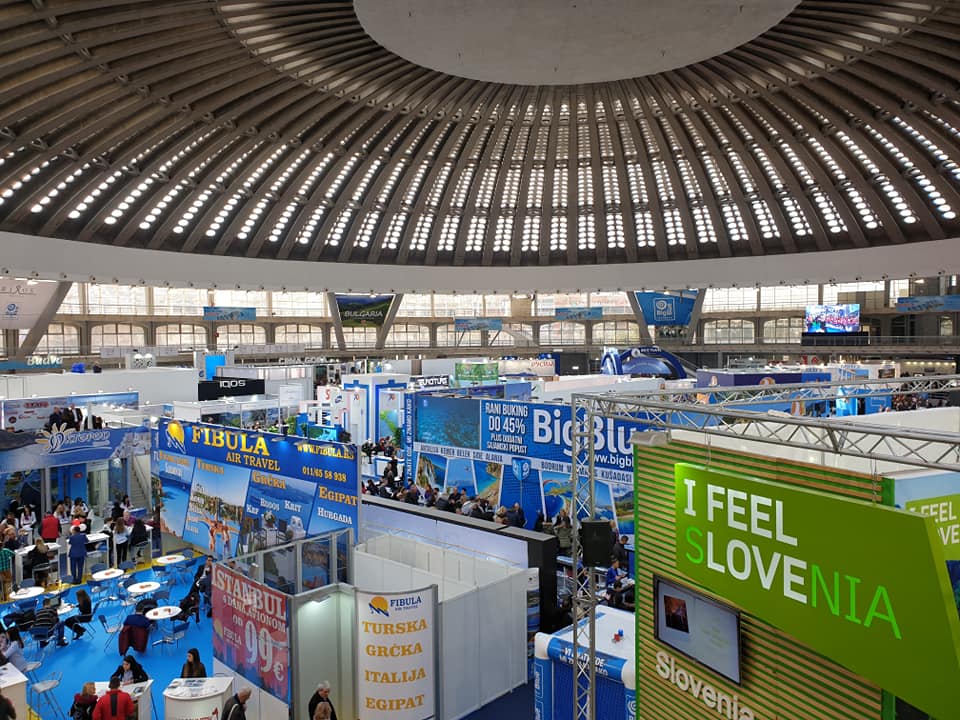
My initial conclusion is that Croatia had decided not to exhibit in Serbia due to the regional conflict back in the 1990s, but then I was surprised to learn that Croatia had been the partner country of the Belgrade Tourism Fair as recently as 2011. The Secretary of State for Tourism at the time stated:
At the 33rd Belgrade Tourism Fair, Croatia will be especially presented as a tourist destination. The State Secretary of the Croatian Ministry of Tourism, Ivo Mujo, stated that Croatia's arrival [presentation] in Belgrade, after accepting the invitation to become a partner country of the Belgrade Fair this year, was a new dimension of cooperation.
"Serbian guests are important to us in Croatia, but this isn't a one-way process, because more and more Croatian tourists are going to Serbia. He stressed that he believes that this year's presentation of Croatia in Belgrade will bring Croatia and Serbia closer in the tourist(ic) sense."
And just seven years later, no official Croatian tourism presence whatsoever. I asked the organisers why, and they checked the list of exhibitors and said they were surprised that there were no Croatian tourism boards there. Rumours of a Croatian boycott of the fair after President Vucic's visit to Zagreb were on everyone's lips, but officially the Croatian National Tourist Board said that their interests were elsewhere:
From 2010 to 2017 the Croatian National Tourist Board (CNTB) organized a continued promotional presence of the Croatian tourism offering at the Belgrade tourism fair. While in 2011, we were also the partner country of the fair for that year. However, despite multiple successful years of intensive promotion at the fair, the interest of partners interested in utilizing the CNTB fair facilities/booth, namely tourist boards, agencies, tourism-related companies, etc. wishing to present their offering at the fair has waned over the past few years, decreasing year-in, year-out. Even though there was not enough interest to have a formal presence at the fair this past year, we would like to point out that aside from a presence at fairs, the CNTB also promotes the destination through various marketing activities in Serbia. For example, in May 2017 an online brand campaign was executed on the Serbian market, which included promotional advertising of our key product categories: sun and sea, food and wine and nautical. The campaign was promoted through a range of online portals and over 6 million ad views were achieved.
Serbia represents a neighbouring market that has a strong knowledge of Croatia as a destination as well as Croatia's tourism offering. It is also a market where most visitors arrive through individually organized trips and when looking at the number of overnights in 2017, ranks as the 18th market (with 973 thousand overnights). We still plan a continued presence on the market through other promotional campaigns and activities.
I asked the current Secretary of State for Tourism about the lack of official Croatian tourist board presence, and I received this reply:
Croatia is a very popular tourist destination in Serbia, and tourists from Serbia are our traditional guests. Last year in Croatia, guests from Serbia had 153 thousand arrivals and 973 thousand overnight stays, representing an increase of 11 per cent compared to 2016. Similarly, Serbia is a very popular destination for our people, especially when it comes to shorter or city break visits. In this respect, we believe that positive trends in the growth of tourist traffic and accompanying promotional activities on both sides will continue in the coming years.
Reason enough to make a little effort to attract some more tourists, especially in a traditional market so close to home, where the potential was to get a tourist not for a one time visit from China, but for life.
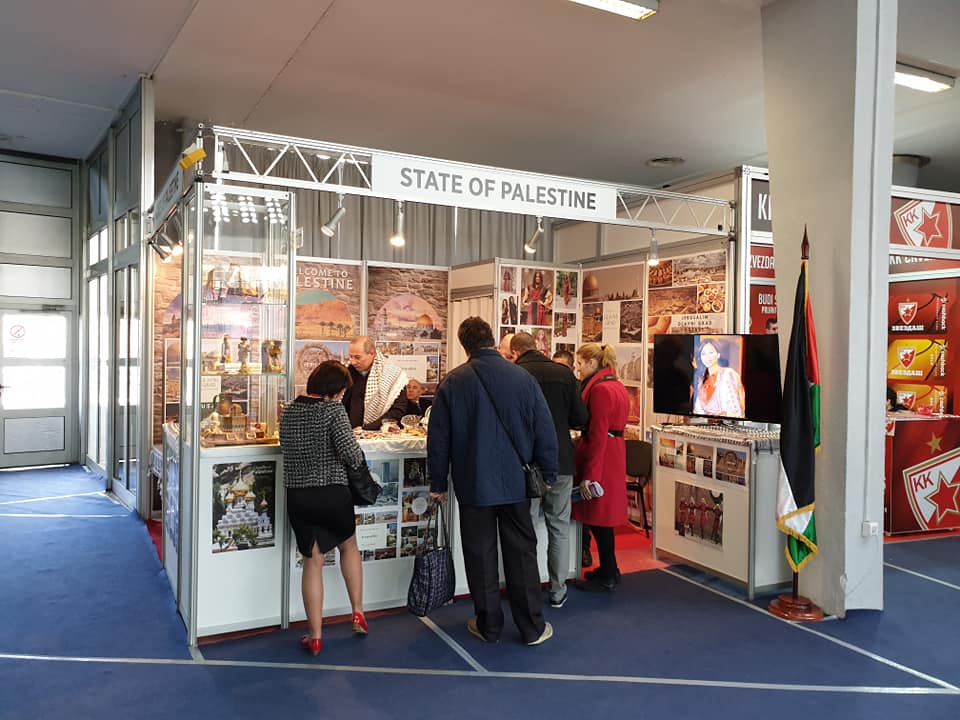
Apparently not.
Walking around the fair, I was struck by the conversations of young people walking around, looking for their next holiday. Greece shone. So did Turkey, Bulgaria, Slovenia and Egypt. There was also plenty of more exotic destinations which attracted plenty of interest. I noted that the boys from Palestine were back after a successful Belgrade Tourism Fair in 2018.
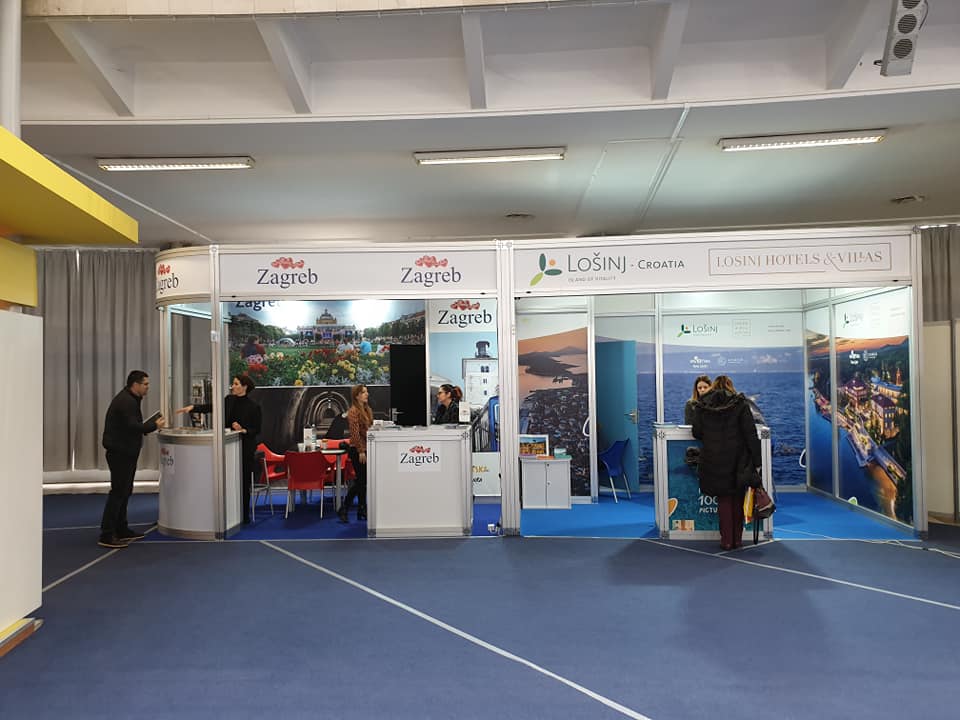
And somewhere, almost as an afterthought, the entire official Croatian representation - the Tourist Board of Zagreb (at least this fair actually existed and they didn't pay 29,000 euro for nothing) and the Tourist Board of Losinj.
That was it.
A little more research showed that there were a small number of other tourist boards there in a different capacity, including this presentation of Eastern Croatia.
But at an influential fair on Croatia's doorstep, where Croatia was notable by its absence.
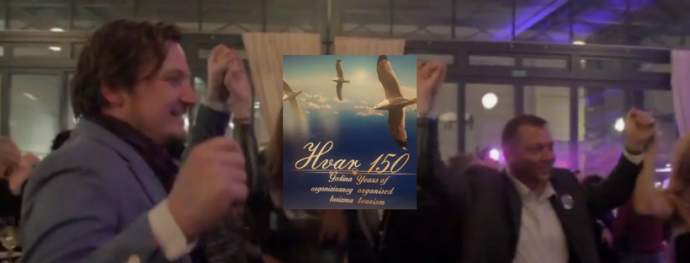
Even our old friends, the Kings of Accidental Tourism from Hvar were not to be seen. Last year was 150 years of organised tourism in Europe, which was celebrated with great style paying tribute to the special Hvar-Belgrade bond at a party that was never supposed to make the Croatian media. But in year 151, that love seems to have waned.
Unofficially, I can confirm that the Hvar love of Belgrade is real. I bump into more people from Hvar each time I visit the Serb capital than I do walking the streets of Jelsa.
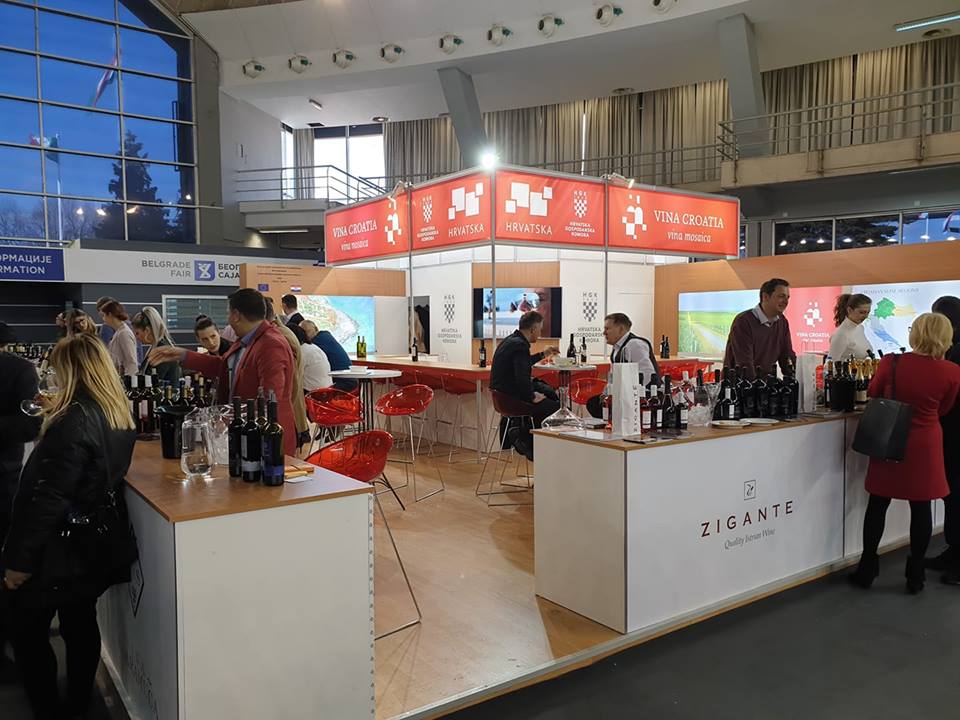
So why the lack of Croatian interest in the Belgrade fair? The simple explanation from one section of our enlightened readership is that Croatia doesn't want any Serbs to visit.
It is an argument that one can understand from recent history, perhaps, not a great economic argument, but understandable. But then you go to the wine section of the Belgrade Tourism Fair, and seemingly the biggest stand belongs to... Croatia.
Ably supported by the Croatian Chamber of Economy.
The Croatian Chamber of Economy at the Belgrade Tourism Fair where Croatia had all but totally boycotted the main tourism section once again, but was out in force promoting wine. None of the numerous Croatian exhibitors could understand the lack of official Croatian tourism presence at such an important fair on Croatia's doorstep. One which had the potential to woo the next generation and get them hooked on holidays in Croatia for the next 30 years.
But the Kings of Accidental Tourism obviously have a plan.
Palestine 2019, anyone?
Eastern Croatia Presented at Belgrade Tourism Fair
The Belgrade Tourism Fair is one of the largest in the region, and this year it was held from 21 to 24 February. It was an ideal opportunity to present the tourist offer of Slavonia and Baranja. Visitors were introduced to the European Amazon bicycle route, the Osijek and Subotica Art Nouveau tourist route, the Green Pathways of the Danube and Drava rivers, and the Central Danube Tour – the Central Danube Tourist Destination.
The European Amazon bicycle route stretches from the Alps to the Pannonian plain along the most extensive natural river system in Central Europe. It covers Austria, Slovenia, Hungary, Croatia and Serbia and nearly one million hectares of highly-valuable natural and cultural landscapes and more than 1,000 kilometres of cycling trails.
The Art Nouveau tourist tour of Osijek and Subotica links these two Central European towns of similar size and common historical heritage. Art Nouveau, as a new architecture style, appeared in Osijek in parallel with its emergence in Vienna. Apart from the construction of Art Nouveau housing and industrial buildings, Osijek proudly boasts the tradition of Art Nouveau physical planning as well, since it started with the policy of planned street and park construction in the early 20th century. The most impressive examples of the Art Nouveau in Osijek are the European Avenue, with a unique series of Art Nouveau houses with front-yards, the Postal Palace, the Sakuntala Park, the Urania cinema, and the Art Nouveau fountain.
The Green Pathways of Danube and Drava combine cycling, hiking, kayaking, canoeing and horseback riding, and stretch from Belišće, on the river Drava, for 54 kilometres to Erdut, where the river joins the Danube. On this route, the visitors can learn about the cultural heritage of this region and visit, for example, the Erdut Tower, the sacral heritage (the sanctuary of Our Lady of Consolation in Aljmaš and the sanctuary of St. Anna in Bistrinci), the industrial heritage of the town of Belišće, and of course the natural heritage, the flora and fauna of the Danube and the Drava rivers.
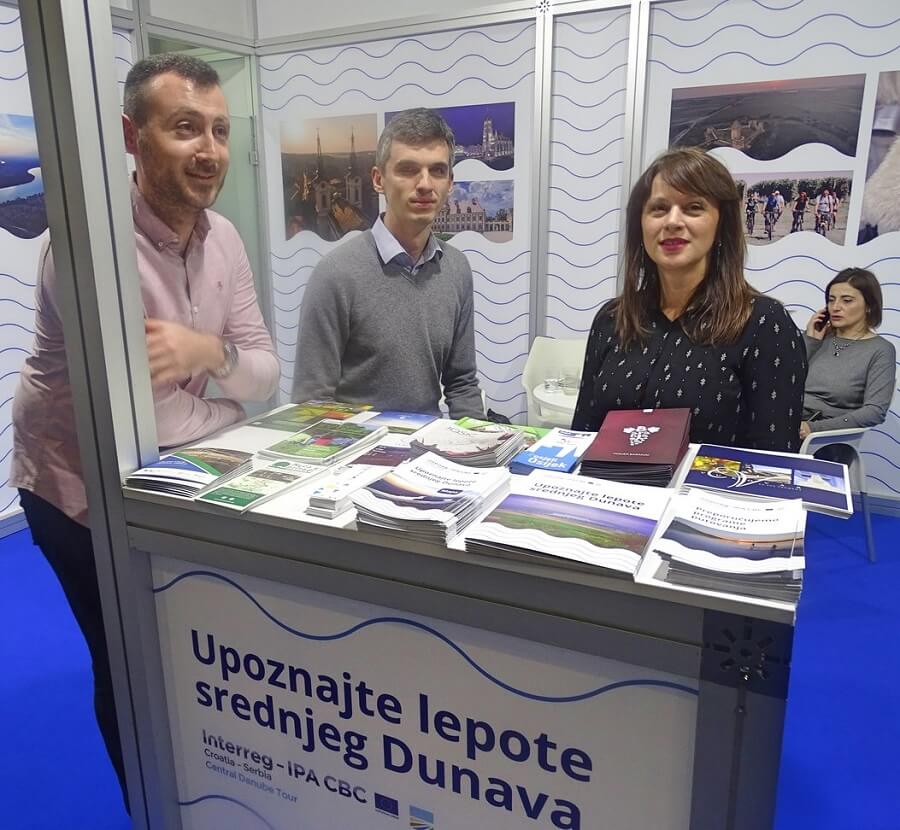
The Central Danube tourist destination stretches from Baranja in Croatia to Kovilj-Petrovaradin marshes in Serbia. This destination integrates multi-ethnic heritage, natural and cultural resources and landmarks into a single package visible in the local, regional and international markets. The common package of tourism products and services was presented through thematic cross-border routes. This destination offers tourists a mix of Danube natural wealth and the Pannonian way of living. Its contents include mystical Pannonian legends, the cultures which have left traces about their existence from prehistoric times to the present day, the picturesque nature with the varied animal and plant species, the scents and tastes of gastronomy which bases its uniqueness on the mix of peoples and has given birth to the wealth of dishes rarely seen elsewhere.
The wine offer of this area is represented by Baranja, Erdut, Ilok and Sremski Karlovci. Baranja and Erdut are rural wine destinations, while Ilok and Sremski Karlovac are urban destinations steeped in history. The rich history of this region is best presented by the Museum of the Vučedol Culture. The Kopački Rit Nature Park, located on the left bank of the Danube, has its counterpart in the special nature reserve of Gornje Podunavlje situated on the right side of the Danube, and a bit farther away is the special nature reserve Kovilj-Petrovaradin marshes.
The Belje wines, which are produced in Baranja, cover the largest area of vineyards in Croatia (650 hectares), while Zmajevac is widely known for its “surduks”, “gators” and events such as the Wine Marathon. The Erdut wine area is particularly well-known for its great Danube meander, the largest wooden wine barrel in the world still in use, and the Bike&Wine event. Ilok is famous for its medieval town core, the country estate of Principovac, and the Ilok Grape Harvest event.
In addition to the destinations and topical tours from the eastern part of Croatia, visitors of the Belgrade Tourism Fair were also very much interested in similar routes from the wider Pannonian area, such as the Vojvodina Wine Paths, and the Trail of Cheese and Honey, located in the Žabalj municipality in Vojvodina.
More news about Croatian tourism can be found in the Travel section.
Police IT System Fails, Long Lines at Croatian Border Crossings
The IT system of Croatia’s Interior Ministry has failed, which has caused long lines at Croatian border crossings. Personal documents and passports also cannot be issued at police offices around the country, reports Index.hr on February 22, 2019.
The police did not initially confirm the information.
According to the Bosnian media, the system for checking biometric documents at the majority of border crossings between Bosnia and Herzegovina and Croatia has failed. Therefore, the traffic is currently suspended, and long columns of vehicles are being formed at the border crossings.
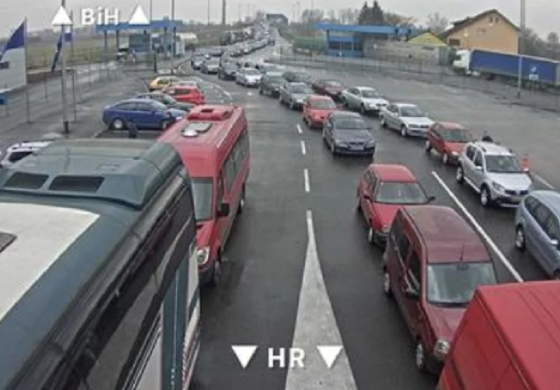
The system failed at about 10 am this morning, and the columns of vehicles at border crossings have been getting longer ever since.
“Due to the failure of the border inspection system of the Ministry of the Interior of the Republic of Croatia today at 10.30 am, the traffic of persons and vehicles through international border crossings is stopped or significantly slowed down at different intervals," Sanela Dujković, the spokesperson of the Bosnian border police, said for Klix.ba.
“Due to technical difficulties, longer waiting times are possible at most border crossings,” said the Croatian Auto Club (HAK).
At 1.40 pm, the Interior Ministry finally issued a statement about the latest events.
“The Ministry of Interior Affairs of the Republic of Croatia informs the citizens that during the day the operation of a part of the Ministry’s IT system has been interrupted, which is why certain assignments are being conducted slower than usual. The Ministry's expert services are working diligently to restore the system to being fully functional. We ask the citizens, who have found themselves at the border crossings and in the Ministry’s administrative affairs offices, for understanding and patience,” they said.
The website of the Croatian Auto Club has live cams with video from some of the border crossings.
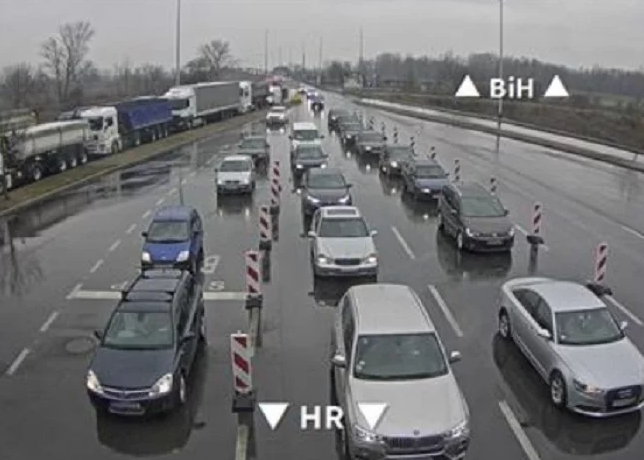
Translated from Index.hr.
More news about the Ministry of Interior can be found in the Politics section.
Croatia and Serbia Far from Agreement on Border
ZAGREB, February 21, 2019 - A year after Croatian President Kolinda Grabar-Kitarović and her Serbian counterpart Aleksandar Vučić met in Zagreb and agreed that the two countries should try to reach an agreement on the border in the next two years, there is still no agreement between Croatia and Serbia on the matter, with their positions being the farthest with regard to the border on the Danube River.
In February 2018 the two presidents agreed that Croatia and Serbia would try to reach an agreement on the border in the next two years and that if they did not succeed, they would address an international tribunal.
The Serbian president said at the time that Zagreb and Belgrade had opposed positions on the border.
According to officials in Belgrade, even though there has been some progress with regard to the land border, Croatia and Serbia are still miles from an agreement on the border on the Danube River.
A State Secretary at the Serbian Foreign Ministry, Nemanja Stevanović, said in a recent interview with the Serbian news agency Tanjug that the biggest obstacle to the agreement were two river islands on the Danube - the Šarengrad and Vukovar islands - and that Zagreb insisted on a solution that was contrary to international law.
In a comment for Hina, the Croatian Foreign Ministry dismissed the claim about the violation of international law, reiterating that the border of Croatia as a Yugoslav republic had become its state border with its declaration of independence.
"The positions and demands of the Republic of Croatia are firmly founded in and are in line with international law," the Croatian Foreign Ministry said, adding that Croatia wanted a future bilateral border agreement to incorporate "the 1991 border of the former republic which on the day Croatia declared independence became an international border between Croatia and Serbia."
In other words, Croatia wants the basis for an agreement to be the cadastre. "This was also confirmed in the position of the Badinter commission," it added. It noted that the border between the two republics had never been on the Danube.
"The border between the two former republics, in line with both Croatia and Serbia's legislation, was defined precisely and it was not on the Danube but rather stretched, both in Srijem and in Baranja, along the outer borders of municipalities of both republics that were also the outer borders of those municipalities' cadastres in 1991," the Croatian ministry said.
It also stressed that in the continuation of negotiations it expected "Serbia to abide by its general position, made public on a number of occasions, on the need to respect the borders between the former republics as one of the main principles of international law, and to apply them in defining its position for the entire border with Croatia because at present it accepts that principle for only one part of the border, in the area of Srijem."
Stevanović nonetheless notes that at a meeting of the inter-state commission for borders in 2018 certain progress was made with regard to the land border.
The Croatian side underlines that the border commission held a meeting in June 2018 in Zagreb at its invitation and that a meeting of an expert working group was held at the end of 2018. "We now expect an invitation from the Serbian side to a new meeting, and we hope it will be held soon," the Croatian Foreign Ministry said.
More news about the relations between Croatia and Serbia can be found in the Politics section.
President Rejects Allegations She Changed Speeches to Appease Vučić
ZAGREB, February 17, 2019 - The Office of President Kolinda Grabar-Kitarović on Saturday denied the claim by her former domestic policy adviser Mate Radeljić that she had promised to Serbian President Aleksandar Vucic that she would not use the terms "Greater Serbia aggression" and "the Srebrenica genocide" in her public speeches.
"There is no need to again answer questions about which there is no doubt whatsoever. What happened in the 1990s was aggression on Croatia in the name of Greater Serbia policy, and an international tribunal has qualified the crimes committed in Srebrenica as genocide and no one with good intentions questions that," spokeswoman for the President's Office Ivana Crnić said.
Radeljić told the RTL commercial television channel that the Croatian president had promised to her Serbian counterpart that she would not use the terms "Greater Serbian aggression" and "the Srebrenica genocide".
RTL asked Radeljić who the president was referring to when she said at a press conference earlier on Saturday that she was wrong about the "For the Homeland Ready" salute because one of her advisers had told her that it was a historical Croatian greeting. "It turns out that the president was some sort of a puppet of her advisers. I don't know who she was referring to and it would have been nice if she had said who she meant," Radeljić said.
Radeljić then wondered if any of her advisers told her after Vučić's visit to Croatia last year to give an instruction that the two terms should not be used in any of her public speeches.
"She personally told me after Aleksandar Vučić's visit that she did not want the term Greater Serbia aggression or the Srebrenica genocide to be used in public speeches because she had promised that to Aleksandar Vučić. Let her deny this now and blame it on her advisers," Radeljić said.
Radeljić claimed that Grabar-Kitarović had not used the two terms in any of her speeches after the Serbian president's visit. However, some media have found that this is not true and that the Croatian president used the term "Greater Serbia aggression".
More news on the relations between Croatia and Serbia can be found in the Politics section.


